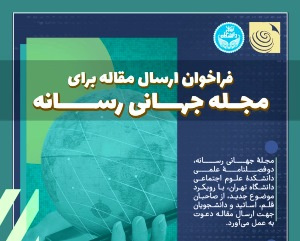بربررسی نحوه اثرگذاری اجزای منابع نقدینگی در اقتصاد ایران: رهیافت DSGE (مقاله علمی وزارت علوم)
درجه علمی: نشریه علمی (وزارت علوم)
آرشیو
چکیده
کنترل مدیریت نشده رشد نقدینگی به دلیل پیامدهای منفی آن، همواره مورد توجه سیاست گذاران بوده است. هدف مقاله حاضر تحلیل و بررسی مکانیسم اثر گذاری اجزای منابع نقدینگی بر متغیرهای کلان اقتصادی ایران است. تغییرات نقدینگی منابع مختلفی دارد و ناشی از تغییر در عرضه دارایی های متفاوتی است که اجزای مختلف منابع نقدینگی را تشکیل می دهند و می توانند اثرات متفاوتی بر عملکرد متغیرهای کلان اقتصادی داشته باشند. به این منظور یک الگوی اقتصاد کلان با لحاظ کردن اجزای منابع نقدینگی شامل خالص دارایی های خارجی بانک مرکزی، خالص دارایی های خارجی بانک ها و مؤسسات اعتباری غیر بانکی، خالص بدهی بخش دولتی به بانک مرکزی، خالص بدهی بخش دولتی به بانک ها و مؤسسات اعتباری غیربانکی و بدهی بخش غیر دولتی به بانک ها و مؤسسات اعتباری طراحی شده است که روابط متغیرهای اقتصادی را در چهارچوب یک مدل تعادل عمومی پویای تصادفی ارائه می دهد. الگوی موردنظر براساس اطلاعات اقتصاد ایران طی دوره زمانی 1379-1399 شبیه سازی شده است. واکنش متغیرهای کلان اقتصادی به ازای رشدهای یکسان نقدینگی براساس توابع عکس العمل آنی، نشان می دهد اجزای مختلف منابع نقدینگی اثرات متفاوتی بر متغیرهای کلان اقتصادی دارند. این نتایج حامل این پیام سیاستی است که علاوه بر مدیریت نقدینگی، توجه به تحولات اجزای منابع نقدینگی نیز از اهمیت بسیاری در حوزه سیاست گذاری پولی برخوردار است.Investigating the effects of the components of liquidity sources in Iran's economy dynamic stochastic general equilibrium approach
Introduction
The volume of the external money supply is determined by the policymaker, but the amount of money and liquidity will be influenced by the individual's decision to combine their portfolios and the behavior of banks (through lending channels and balance sheets) in the internal money supply. From this perspective, the initial change in external currency (monetary base) causes changes in the supply and demand of all types of assets (such as external and internal money) and their rate of return, and the behavior of individuals and banks determines the optimal composition of the portfolio of assets of individuals and banks and the new and balanced composition of liquidity volume. . Due to differences in the structure of the economy in different countries, the external currency itself can be created from different origins, the exogenous increase of each component of the central bank's asset column (monetary base) causes a change in the relative supply of that asset and its rate of return. Liquidity changes have different sources and are due to changes in the supply of different assets that make up different components of liquidity resources and since the components of liquidity resources are not of the same kind and originate from different processes can have different effects on the performance of macroeconomic variables. The purpose of this article is to analyze and investigate the mechanism of the effect of the components of liquidity resources on the macroeconomic variables of Iran. Changes in liquidity have different sources and are caused by changes in the supply of different assets that form different components of liquidity
sources and can have different effects on the performance of macroeconomic variables. For this purpose, a macroeconomic model by including the components of liquidity resources including net foreign assets of the central bank, net foreign assets of banks and non-bank credit institutions, net debt of the public sector to the central bank, net debt of the public sector to banks and non-bank credit institutions and Non-governmental sector debt is designed to show the relationships of economic variables in the framework of a dynamic stochastic general equilibrium model provides.
Methodology
The model presented in this research is a small open economy consisting of six sectors of households, firms, foreign sectors, banks and credit institutions, government and central bank within the framework of dynamic stochastic general equilibrium model of new Keynesians with respect to nominal and real frictions. By optimizing the objective functions of each of the above brokers, the result of the obtained economic relations is a system of nonlinear differential equations under rational expectations that are currently not empirically solvable, especially in larger patterns. But we can use approximation technique to calculate the model solution in the approximate range functionally. In this research, the set of equations is linear logarithmic using the Ahlik method (1999). In the next step, the input values of the pattern and calibration of parameters and variables have been done using the Iranian economy data during the period 2000-2020. Then, using the Dynar software, the system of equations based on the Bunchard-Kahn method is solved. The results of the statistical tests and moments indicate that the proposed model is suitable for simulating Iran's economy.
Results and Discussion
In order to evaluate the different effects of liquidity resources on economic variables, the reaction of these variables to liquidity component shocks based on instantaneous reaction functions has been investigated. The findings of the research show that the net assets of the banking system through balance of payments and net debt to the banking system through the channel of the state financial balance, if the source of liquidity is created, increases the variables of production, consumption and investment and causes mild growth or decrease of inflation and exchange rate variables. However, if the source of the liquidity creation of non-governmental debts is from the channel of facilitation, it has a decreasing effect on the variables of production, consumption and investment, and only increases inflation and exchange rate. The two sources of the net assets of the banking system and the net of government liabilities to the banking system, contrary to the source of non-governmental sector debt due to the creation of added value in the economy, have more productive effects and investment and less inflationary effects, hence, macroeconomic stability will bring.
Conclusion
The reaction of macroeconomic variables for the same liquidity growth based on instantaneous reaction functions shows that different components of liquidity sources have different effects on macroeconomic variables. These results carry the policy message that, in addition to liquidity management, attention to the developments in liquidity resources components is also important in the field of monetary policy. Considering that liquidity has increased by about 5% in all five components of liquidity components, the effects and implications of the five components of liquidity creation sources can be examined. Comparative results indicate that for the specific growth of liquidity, the increases caused by the net assets of the banking system and the net of public sector liabilities to the banking system have more productive and investment effects and less inflationary effects, hence macroeconomic stability. Therefore, it is recommended that the monetary transition policy as much as possible prevent the increase in non-governmental sector debt which leads to increased liquidity.




